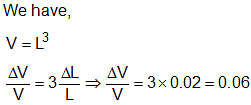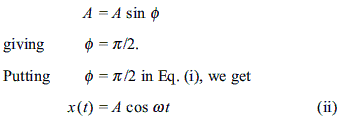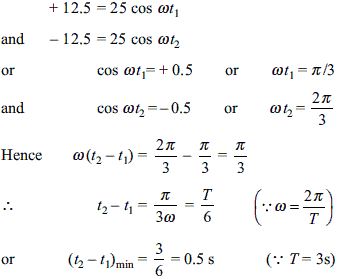BITSAT Practice Test - 8 - JEE MCQ
30 Questions MCQ Test BITSAT Mock Tests Series & Past Year Papers 2025 - BITSAT Practice Test - 8
A non-uniform thin rod of length L is placed along X-axis as such its one of ends is at the origin. The linear mass density of rod is λ = λ0x. The distance of centre of mass of rod from the origin is
The electrons in the atom of an element which determine its chemical and electrical properties are called
| 1 Crore+ students have signed up on EduRev. Have you? Download the App |
A body of mass, m is attached to the lower end of a spring whose upper end is fixed. The spring has negligible mass. When the mass m is slightly pulled down and released, it oscillates with a time period of 3 s. When the mass m is increased by 1 kg, the time period of oscillations becomes 5 s. The value of m in kg is
If a particle of charge 10−12 C moving along the x-direction with a velocity of 105 m/s experience a force of 10−10 N in y-direction due to magnetic field, then the minimum value of magnetic field is
A ray of light is incident from glass on the interface between water and glass at an angle i and refracted parallel to the water surface after comming out of water, then value of μg will be
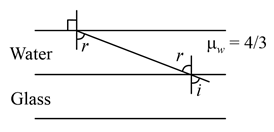
Five persons Ram, Shyam, Mohan, Sohan and Rohit are pulling a cart of mass 100 kg on a smooth surface and cart is moving with an acceleration 3 m s−2 in east direction. If Shyam stop pulling, the cart moves with acceleration 24 m s−2 in the north direction. When Ram stops pulling, it moves with the acceleration 1 m s−2 in the west direction. What is the magnitude of acceleration of the cart when only Ram and Shyam pull the cart keeping their direction same as the old directions?
An electron is moving along the first Bohr orbit of a Hydrogen atom. The corresponding magnetic field induction at its centre is (1G = 10−4 T)
An isolated nucleus which was initially at rest, disintegrates into two nuclei due to internal nuclear forces and no γ rays are produced. If the ratio of their kinetic energy is found to be 64/27 then.
The sides of a rectangle are 6.01 m and 12 m. Taking the significant figures into account, the area of the rectangle is
The diagram below shows the propagation of a wave. Which points are in same phase?
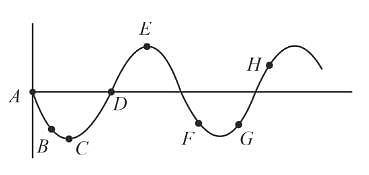
What torque will increase the angular velocity of a solid disc of mass 16 kg and diameter 1 m from zero to 120 rpm in 8 s?
A motorcyclist is trying to jump across a path as shown by driving horizontally off a cliff A at a speed of 5 m s−1. Ignore air resistance and take g = 10 m s−2. The speed with which he touches the clift B is
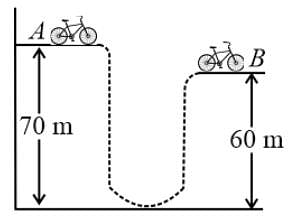
A small object is placed 10 cm in front of a plane mirror. If you stand behind the object, 30 cm from the mirror and look at its image, for what distance must you focus your eyes?
In Millikan's oil drop experiment a drop of charge Q and radius r is kept constant between two plates of potential difference of 800 V. Then charge on other drop of radius 2r which is kept constant with a potential difference of 3200 V is
If Young's double slit experiment is performed in water,
A force 'F' is applied on a square plate of side 'L'. If percentage error in determination of 'L' is 3% and 'F' is 4%, then the permissible error in pressure is
A string of negligible mass, going over a clamped pulley of mass m, supports a block of mass M as shown in the figure. The force on the pulley by the clamp is given by
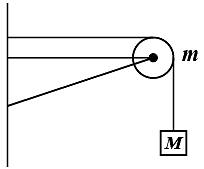
The air of density ρ and moving with a velocity v strikes perpendicularly the inclined surface of area A and of a wedge kept on a horizontal surface. The mass of the wedge is m. Assuming the collisions to be perfectly inelastic, the minimum value of the coefficient of friction between the wedge and the ground, so that the wedge does not move is
(Assume mass of particles of air is negligible)
The potential energy of a 1 kg particle, free to move along the x-axis, is given by The total mechanical energy of the particle is 2 J. Then, the maximum speed (in m/s) is
The total mechanical energy of the particle is 2 J. Then, the maximum speed (in m/s) is
A uniform thin rod of mass M and length L is hinged by a frictionless pivot at its end O as shown in the figure. A bullet of mass m moving horizontally with a velocity v strikes the free end of the rod and gets embedded in it. The angular velocity of the system about O, just after the collision, is
A cube is subjected to a uniform volume compression. If the side of the cube is decreased by 2%, then the bulk strain is
A particle executes SHM of amplitude 25 cm and time period 3 s. What is the minimum time required for the particle to move between two points located at 12.5 cm on either side of the mean position?
A transverse sinusoidal wave of amplitude a, wavelength λ and frequency f is travelling on a stretched string. The maximum speed at any point on the string is v/10, where v is the speed of propagation of the wave. If a = 10-3 m and v = 10 ms-1, then λ and f are given by
A copper wire is held at the two ends by rigid supports. At 30oC, the wire is just taut with negligible tension. Find the speed of transverse waves in the wire at 10oC.
Six charges, each equal to + q, are placed at the corners of a regular hexagon of side a. The electric potential at the point where the diagonals of the hexagon intersect will be
The figure below shows four cells E, F, G and H of emfs 2 V, 1 V, 3 V and 1 V and internal resistances 2 Ω, 1 Ω, 3 Ω and 1 Ω, respectively.
The current flowing in the 2 Ω resistor is
A moving coil galvanometer consists of a coil of N turns and area A suspended by a thin phosphor bronze strip in radial magnetic field B. The moment of inertia of the coil about the axis of rotation is l and C is the torsional constant of the phosphor bronze strip. When a current i is passed through the coil, it deflects through an angle θ (in radians). The current sensitivity of the galvanometer is increased if
Two long, parallel, horizontal rails, distance d apart and each having a resistance λ per unit length are joined at one end by a resistance R. A perfectly conducting rod MN of mass m is free to slide along the rails without friction (see the figure). There is a uniform magnetic field of induction B normal to the plane of the paper and directed into the paper. A variable force F is applied to the rod MN such that as the rod moves, constant current flows through R.
The magnitude of the emf induced in the loop is
The objective of a telescope has a focal length of 1.2 m. It is used to view a 10.0 m tall tower 2 km away. What is the height of the image of the tower formed by the objective?
A diatomic molecule is made of two masses m1 and m2, which are separated by a distance r. If we calculate its rotational energy by applying Bohr's rule of angular momentum quantisation, then its energy will be given by
|
2 videos|17 docs|85 tests
|
|
2 videos|17 docs|85 tests
|


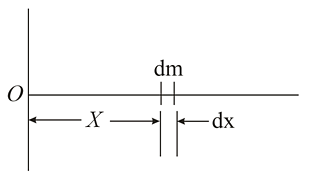
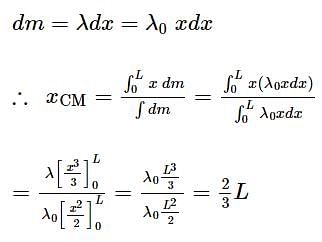
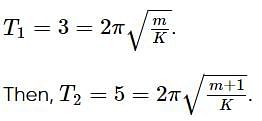
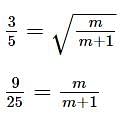


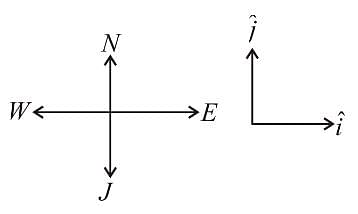
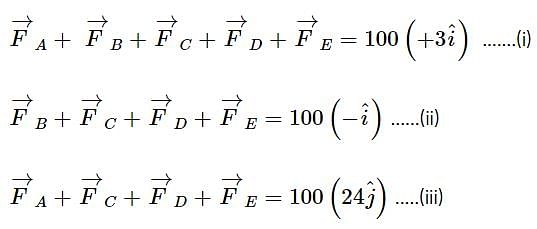

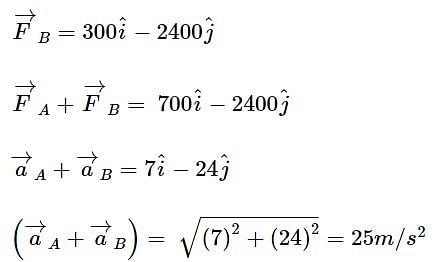

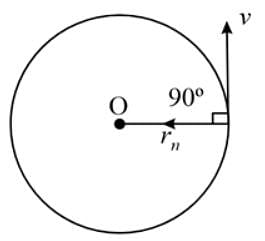

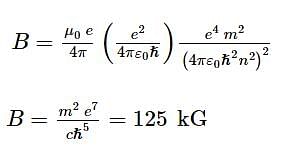
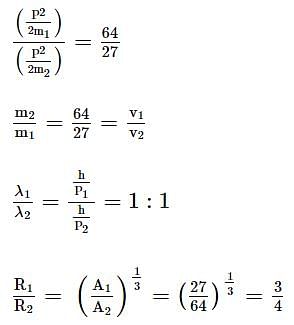
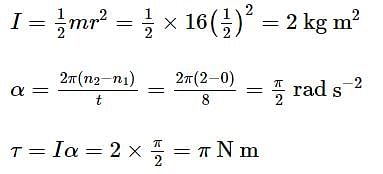



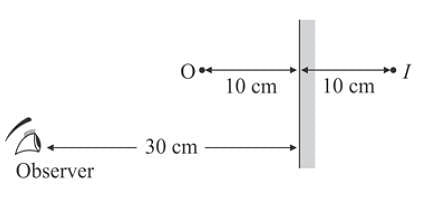
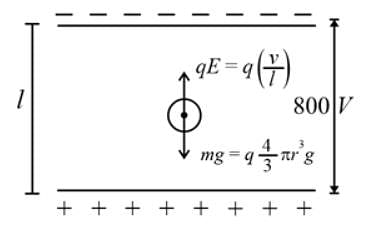

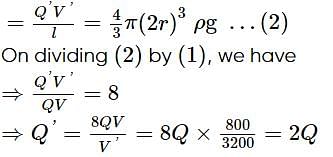

 as λ decreases on entering in water, β also decreases.
as λ decreases on entering in water, β also decreases.
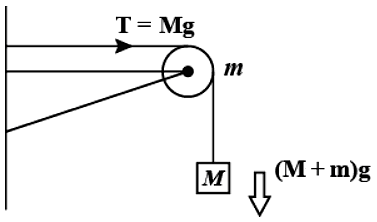
 which is choice (d).
which is choice (d).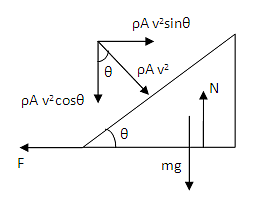

 J
J


 J
J

 m/s
m/s
